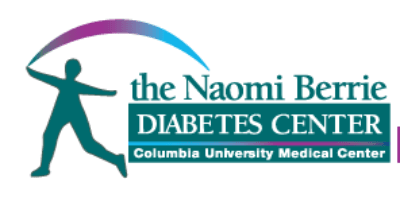
On April 18 the Naomi Berrie Diabetes Center of Columbia University hosted a research update in New York City. Highlights of that meeting are presented in this report. Naomi Berrie is a leading diabetes research center and clinical care provider with 30 physicians providing care, and 50 researchers with expertise in a variety of disciplines.
The format of the meeting was a panel discussion featuring seven research scientists:
- Dr. Robin Goland, Professor of Medicine and Pediatrics; Co-Director of Naomi Berrie
- Dr. Rudy Leibel, Head of the Division of Molecular Genetics; Co-Director of Naomi Berrie
- Dr. Domenico Accili, Director of the Columbia University Diabetes and Endocrinology Research Center
- Nichole Danzl, Ph.D., Postdoctoral Fellow, Columbia Center for Translational Immunology
- Dieter Egli, Ph.D., Assistant Professor in the Division of Molecular Genetics; Faculty of the Columbia Stem Cell Initiative
- Dr. Anthony Ferrante, Ph.D., Chief of Preventative Medicine and Nutrition
- Rebecca Haeusler, Ph.D., Assistant Professor of Pathology and Cell Biology
Each researcher spent a few minutes sharing the progress of their work and then accepted questions from the audience. The discussion lasted for roughly two hours. Three key themes related to T1D cure research expressed by the panel were:
1) T1D AND T2D SHOULD NOT BE SEPARATED IN RESEARCH
The panel expressed a strong perspective that both T1D and T2D should be researched together, in the same lab. Panelist 1 summarized the position with this comment: “Both T1 and T2 create a situation in which beta cells have to overwork, and become stressed...this commonality of disease provides increased (research) opportunities.” This perspective was met with a strong vocal challenge from the lay audience in the room.
The perspective that T1D and T2D can be co-mingled is not unique to Naomi Berrie and is shared by a number of research centers. The T1D community, we believe, has the right to be concerned that co-mingling research will result in far more solutions for T2D and few systemic advances for T1D -- in large part because the number of people with T2D is so much greater.
2) NAOMI BERRIE'S RESEARCH FOCUS IS ON IMMUNE SYSTEM TOLERANCE (E.G., STOPPING THE AUTOIMMUNE ATTACK)
Naomi Berrie is focusing on cell protection rather than cell supply because they believe that supply has already been solved. Given the ongoing challenges in sustainable cell supply acceptance in humans, the strong statement from the panel that beta cell supply is well in hand was surprising and noteworthy. Two specific comments highlight this point of view. Panelist 2 stated: “We can make beta cells from skin cells, we can protect them in mice, (the) next step is to teach the immune system to tolerate these cells.” Panelist 3 followed with: “We have an endless bag of beta cells, now we have to deal with the autoimmune system."
As a result, the focus is on inducing immune tolerance. Specific details regarding projects were not shared.
We are cautiously encouraged by the investigators' optimism in regards to beta cell supply, even though it is inconsistent with the current body of information publicly available. We are following up for details and will share any findings.
3) HUMAN TESTING IS 10 YEARS OUT
When pressed on expected timing of the immune system tolerance research to enter phase I human trials, the response was "10 years." This was described as a "conservative number" but, even so, this is still a long way out. As far as we could tell from the meeting, Naomi Berrie does not have any cure research projects that are on a faster time table to human trials.
